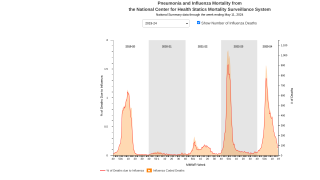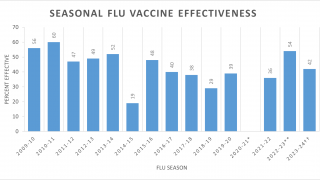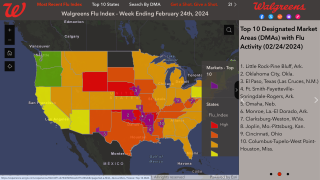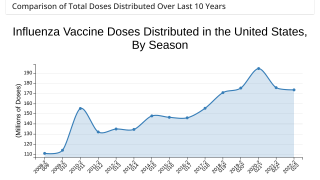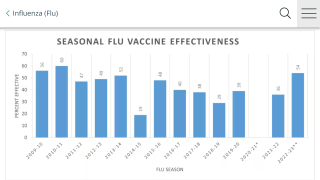Flu-Related US Fatalities May Exceed 24,000

The US Centers for Disease Control and Prevention (CDC) reported the overall influenza activity in the USA continues to decrease during the 2019-2020 flu season.
But, the overall influenza-like illness (ILI) activity is increasing due to more people seeking care for respiratory illness caused by SARS-CoV-2 resulting in COVID-19 disease.
The CDC announced on March 27, 2020, that they estimate so far this flu season there have been at least 39 million flu illnesses, 400,000 hospitalizations and 24,000 fatalities related to one of the various influenza viruses.
Nationally, influenza A(H1N1)pdm09 viruses are the most commonly reported influenza viruses this season. Previously, influenza B/Victoria viruses predominated nationally.
And, laboratory-confirmed influenza-associated hospitalization rates for the U.S. population overall are higher than in most recent seasons.
The rates for children 0-4 years and adults 18-49 years are the highest CDC has on record for these age groups, surpassing rates reported during the 2009 H1N1 pandemic.
Hospitalization rates for school-aged children (5-17 years) are higher than any recent regular season but remain lower than rates experienced by this age group during the 2009 pandemic.
However, 155 influenza-associated deaths in children have been reported so far this season.
This number is higher than recorded at the same time in every season since reporting began in 2004-05, except for the 2009 pandemic.
Of the 155 pediatric fatalities, 99 deaths were associated with influenza B viruses.
In past seasons, the proportion of influenza-related pediatric deaths associated with influenza B viruses has generally been higher than the proportion of influenza B among circulating viruses.
Furthermore, 56 deaths were associated with influenza A viruses, and 31 were subtyped; 30 were A(H1N1)pdm09 viruses, and one was an A(H3) virus.
Human influenza A and B viruses cause seasonal flu epidemics almost every winter in the USA.
Influenza B viruses generally change more slowly in terms of their genetic and antigenic properties than influenza A viruses, especially influenza A(H3N2) viruses.
Influenza surveillance data from recent years shows the co-circulation of influenza B viruses from both lineages around the world.
However, the proportion of influenza B viruses from each lineage that circulates can vary by geographic location.
As of March 16, 2020, in the temperate zone of the Northern Hemisphere, respiratory illness indicators and influenza activity appeared to decrease overall.
- In Europe, influenza activity remained elevated overall, though appeared to have peaked in some countries.
- In Central Asia, influenza activity decreased with detections of all seasonal influenza subtypes.
- In Northern Africa, influenza activity continued to increase in Algeria and Tunisia, with detections of influenza A(H1N1)pdm09 and B viruses.
- In Western Asia, influenza activity decreased in most countries, except in Armenia, Azerbaijan, and Qatar.
- In East Asia, ILI and influenza activity decreased overall.
The CDC did report some good news.
Almost all (>99%) of the influenza viruses tested this season are susceptible to the 4 FDA-approved influenza antiviral medications recommended for use in the USA.
These medications block the viral neuraminidase enzyme and have activity against both influenza A and B viruses.
Three of these drugs are chemically related antiviral medications known as neuraminidase inhibitors: oral oseltamivir phosphate (available as a generic version or under the trade name Tamiflu®), inhaled zanamivir (trade name Relenza®), and intravenous peramivir (trade name Rapivab®).
The 4th medication is oral baloxavir marboxil (trade name Xofluza®), which is active against both influenza A and B viruses but has a different mechanism of action.
Influenza antiviral medications are most effective in reducing complications when treatment is started within 48 hours of illness onset.
For detailed flu medicine and vaccine information, it’s best to speak with a healthcare provider.
Influenza medication and vaccination development news published by Precision Vaccinations.
Our Trust Standards: Medical Advisory Committee















